Anatomy of Cannabis
Knowledge of the proper name for each part of the Cannabis plant can help one describe problems with a cultivar.
Leaves
Types of leaf
Cotyledons
Technically not "true" leaves, these are the initial pair of "leaves" that are present inside the seed casing.
Sugar leaves
Small leaves with trichomes that grow from the buds during flowering. They are trimmed before the bud is smoked, either before or after drying.
Fan leaves
The largest leaves on the plant dedicated to photosynthesis. In a healthy plant, the fan leaves will have up 7 or even 9 fingers.
Parts of the leaf
Petiole
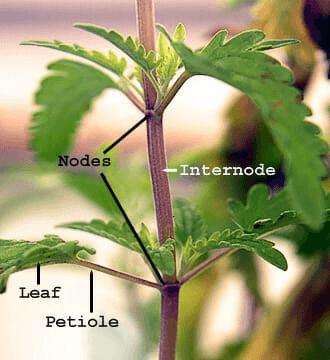
The stalk connecting the leaf to the stem. Petioles and stems may turn purple due to light exposure. As a result, typically the underside is less purple than the upper side.
Apex
The pointed tip of a fan leaf.
Ventral surface
The upper side of the leaf.
Dorsal surface
The underside of a leaf.
Margin
The outer perimeter or edge of a leaf. Cannabis is well recognized due to the distinctive shape of its leaf margins.
Stomata
Stomata are tiny pores in the plant tissue that allow for gas exchange. The majority can be found on the underside of the leaves but they are also found on the surface of leaves and stems.
Buds

The raceme of the cannabis plant.
Cola
A cluster of many buds along the stem and its terminal. Colas will appear and become larger throughout the flowering stage.
Trichomes
Trichomes are resin-filled glands that appear on the sugar leaves and buds of Cannabis in the flowering stage. They contain THC, CBD, and other cannabinoids. They first appear on the plant as a translucent colour but slowly turn milky white as the plant matures. The opacity indicates the amount of THC in the trichrome. As flowering continues the milky white colour turns to amber as the THC converts into CBD.
More on trichomes at Dutch Passion
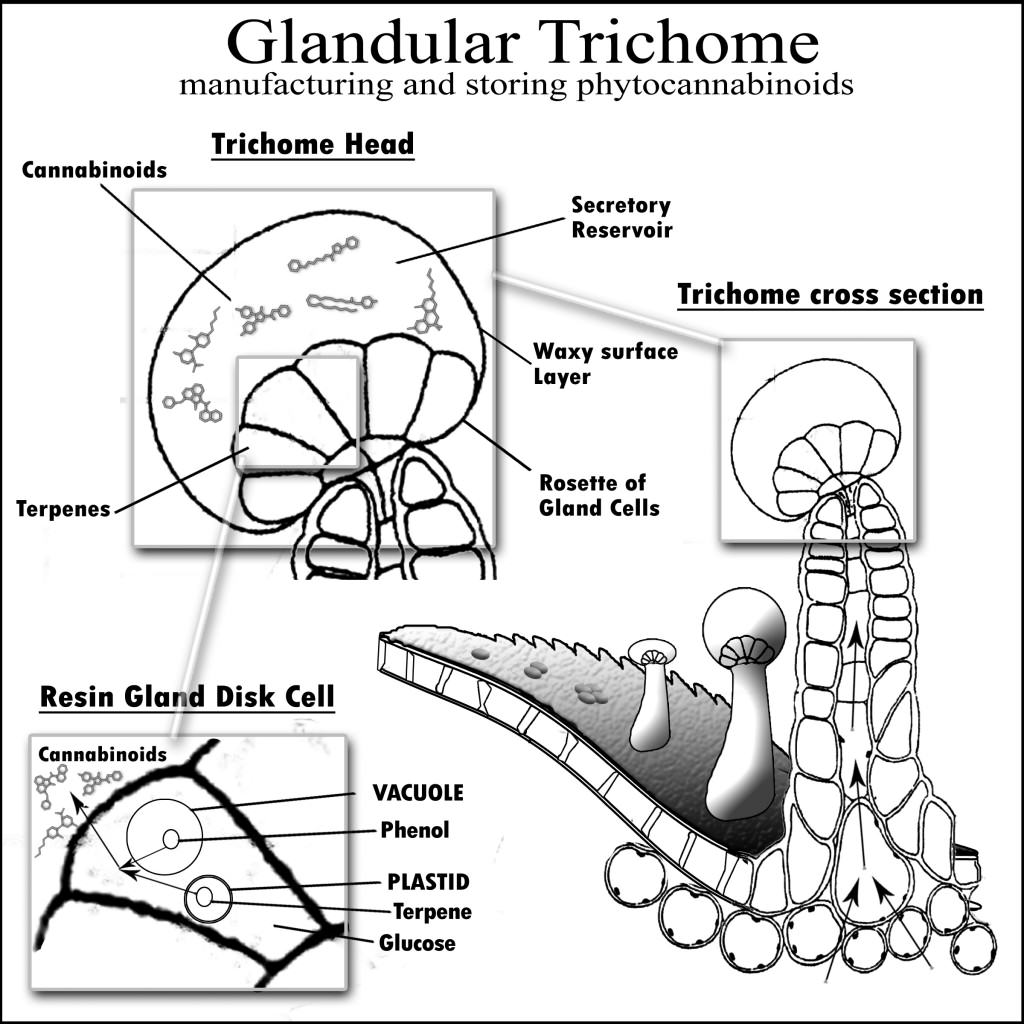
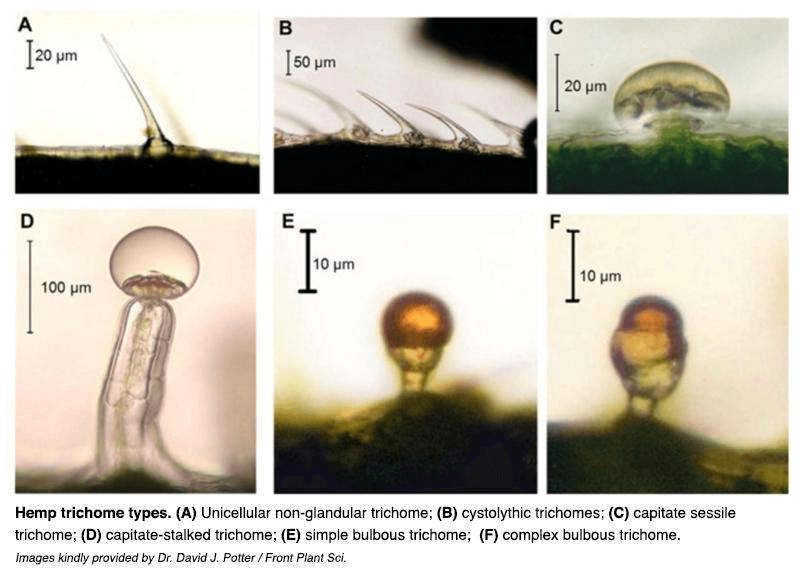
Compounds
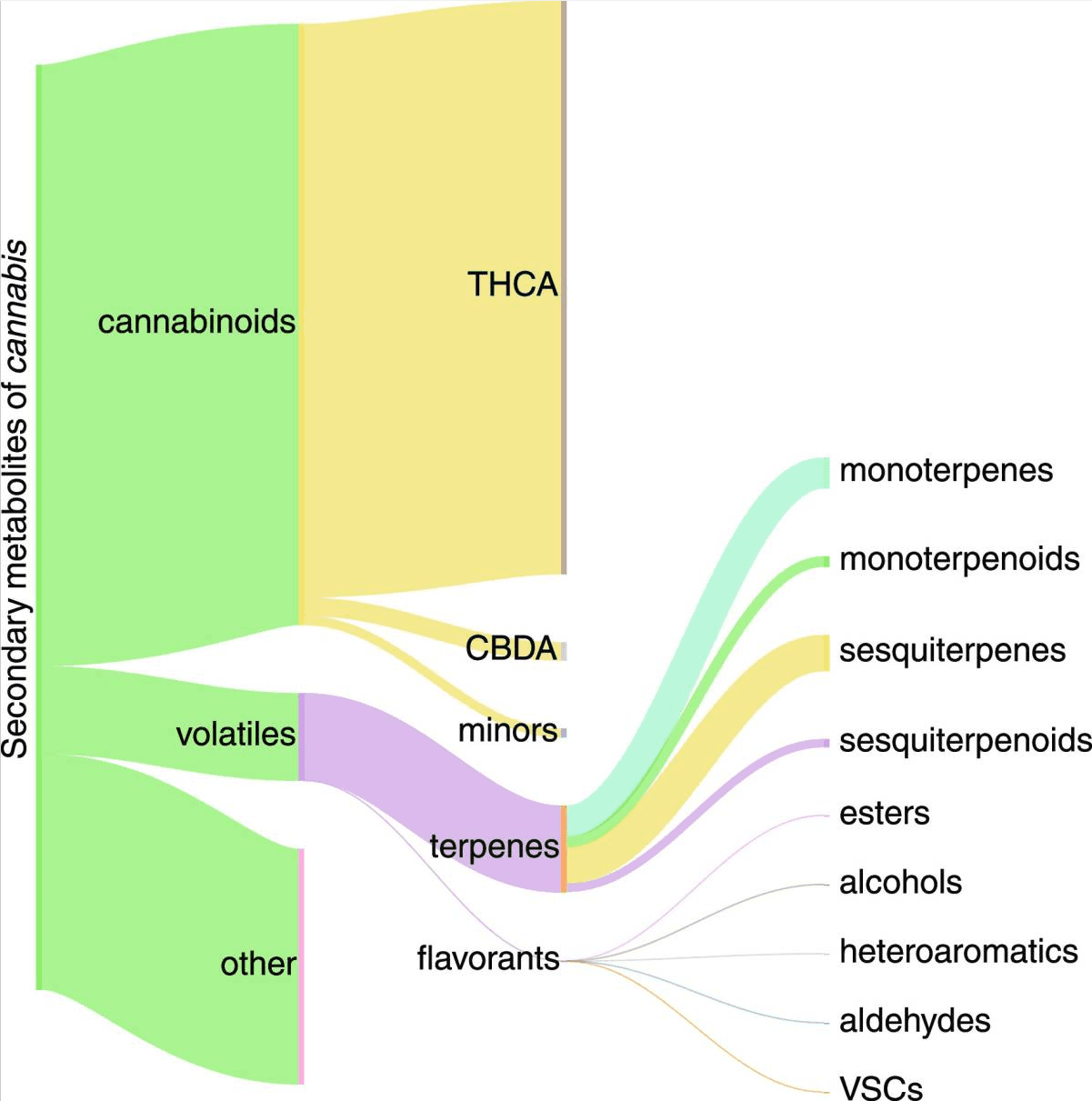
Terpenes
The most notable terpenes used to broadly categorize cannabis are as follows:
- Myrcene
- Pinene
- Caryophyllene
- Limonene
- Terpinolene
They have some effect on aroma and taste but their influence is still under study. see Aroma and taste
Stigma
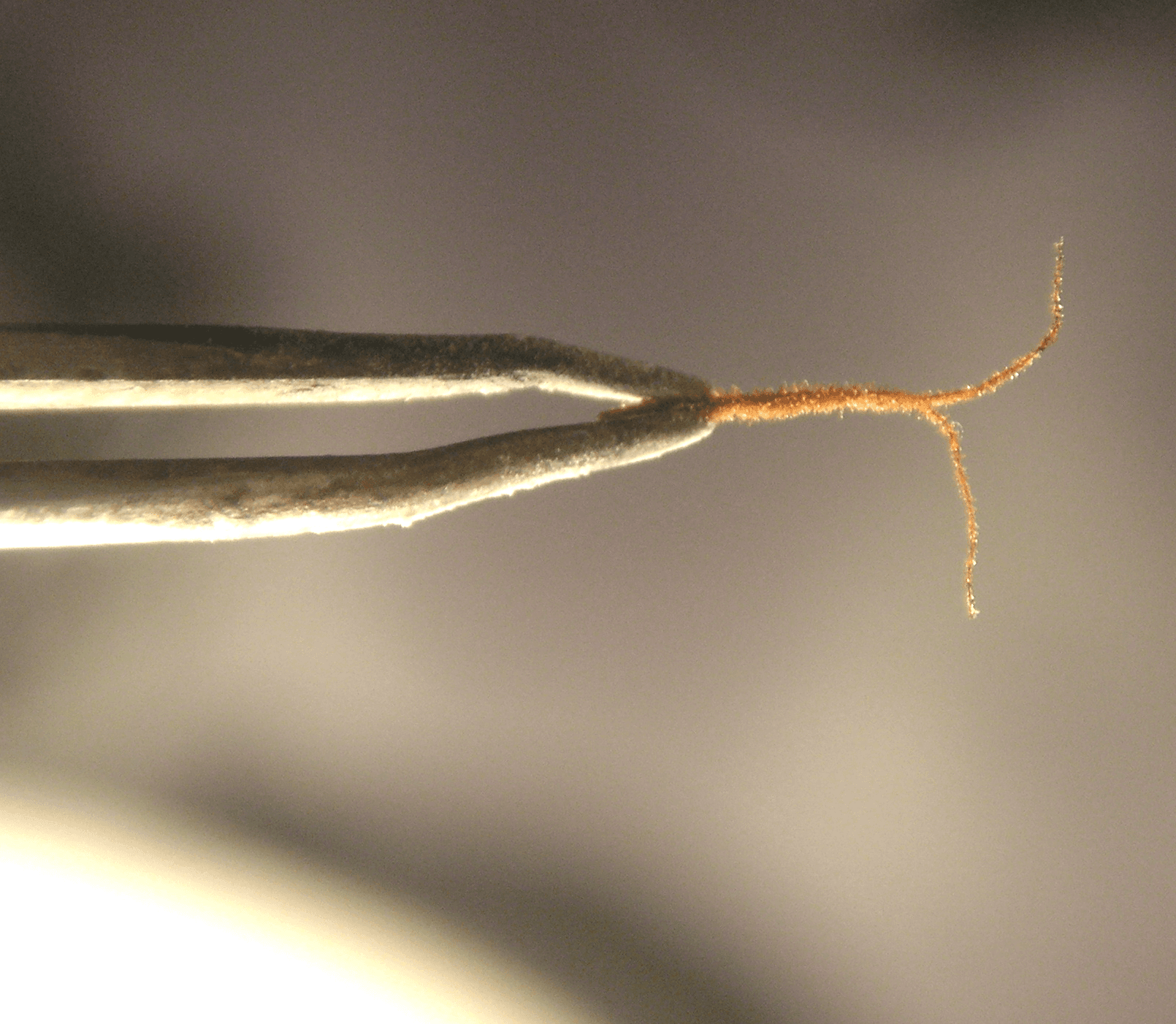
Hair-like structures that emerge from the bud are often (confusingly) referred to as Pistils. This is most likely because the stigma-possessing female plants are referred to as pistillate, which then became short-hand.[1] The coloration of the stigma can provide some insight into the maturity of the plant, as the plant matures, the stigma turns from white to orange.
Bract
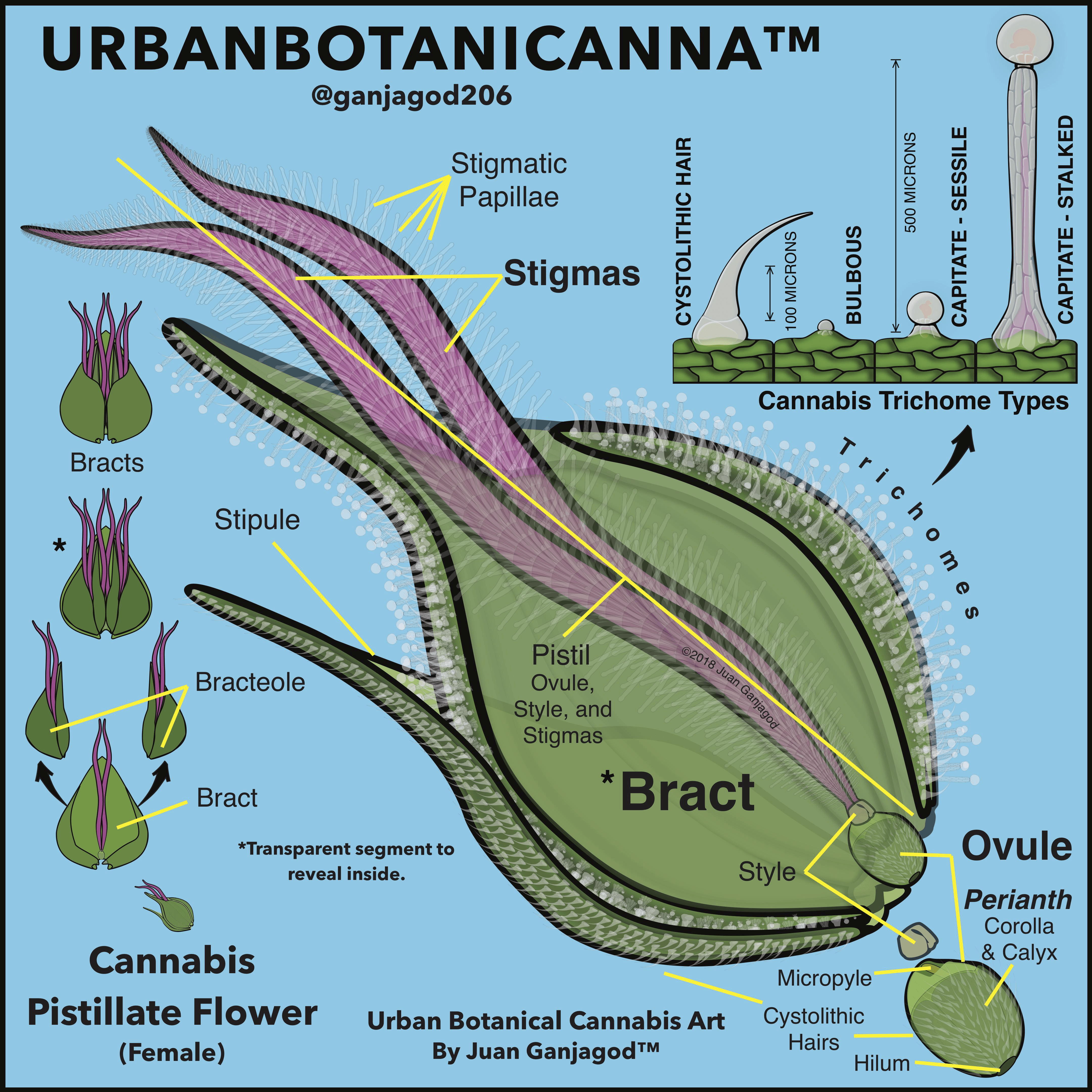
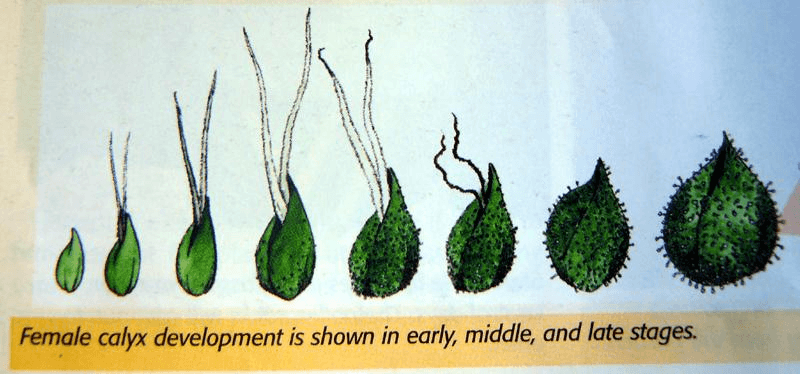
The first part of the flower that forms, the Bract provides protection for the pistils and stigma and is the most resinous part of the bud. As the plant matures the Bract will swell and engulf more of the stigma. The Bract is often identified as a calyx but the calyx actually resides inside of the bract.[2]
Roots
Unless growing using hydroponics or aeroponics the plant's roots are one part of the plant that is seldom seen. This makes them easy to forget despite their importance to plant health and yields. A strong root system will permeate the entire growth substrate and allow for a high rate of transpiration, and nutrient absorption. If the root system rots then a plant will surely perish.
Rhizosphere
The rhizosphere is the area around the roots where the roots interact with the substrate chemically and biologically. This is where symbiotic microbes and mycorrhizal fungi thrive and interact with the roots.
Plant body
Node
The points on the main stem that lateral branches emerge from. In the vegetative stage, nodes sprout two branches on opposite sides of the main stem. In flowering, lateral branches sprout in a staggered fashion alternating the side of the main stem they grow from.
Plant metrics
Transpiration rate
The rate at which water is being absorbed by the roots and expelled through the leaves via the stomata. The VPD of the environment a plant is in determines the maximum rate of transpiration.
This is a key metric for determining the growth rate of a plant.
Inter-nodal distance
Distance between nodes on the main stem.
Stem diameter
This refers to the diameter of the main stem. It has been shown that stem diameter is positively correlated with weight yield.
References
- https://weedmaps.com/learn/dictionary/pistil
- The Nomenclature of Female Flowers, 2017 - https://www.cannabisbusinesstimes.com/article/the-nomenclature-of-female-flowers/